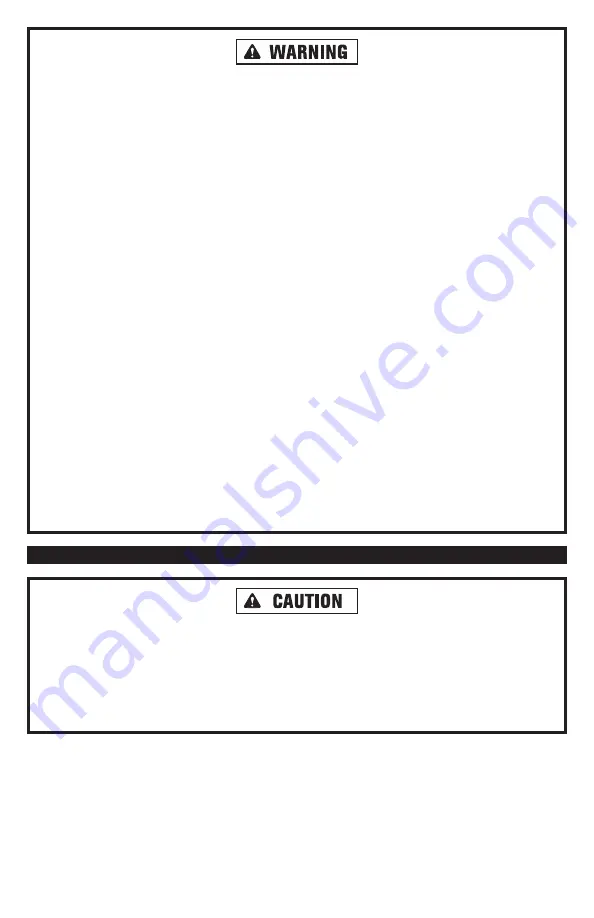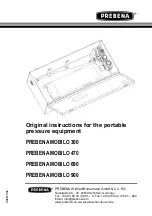
RISK OF FLYING OBJECTS
Do not direct compressed air stream at people or pets. The powerful compressed air
stream can damage exposed skin and easily propel loose dirt and other small objects at
high-speed, resulting in serious injury. Always wear eye protection that meets ANSI Z28.1
specifications. Use only OSHA approved air blowguns. Never leave a pressurized air
compressor unattended. Shut OFF air compressor and relieve pressure before performing
maintenance or repairs. Do not move the air compressor while the air tank is pressurized.
Never attempt to move the air compressor by pulling on the air hose.
RISK OF FALLING
Portable air compressors can fall from a table, workbench, or roof causing damage to the
compressor and could result in serious injury or death to the operator. Always operate air
compressor in a stable and secure position to prevent accidental movement of the unit.
Never operate air compressor on a roof or other elevated position. Use additional air hose
to reach high locations.
RISK OF PROPERTY DAMAGE WHEN TRANSPORTING COMPRESSOR
Oil can leak or spill and could result in fire or breathing hazard, serious injury or death. Oil leaks
will damage carpet, paint, or other surfaces in vehicles or trailers.
AIR TOOLS AND ACCESSORIES
Do not exceed the pressure rating of any air tools, spray guns, air accessories, or inflat-
ables. Excess pressure can cause them to explode, resulting in serious injury. Follow the
manufacturers recommended pressure settings for all air tools and air accessories.
INSTALLATION AND LOCATION
The compressor must be run with the rubber feet resting on a flat and stable horizontal
surface.
The air compressor must be used in a clean and well-ventilated area. The compressor
requires an unobstructed airflow and must be located a minimum of 20 inches from any
walls or other obstructions that may prevent proper ventilation.
8
Summary of Contents for 240039
Page 27: ...26 PARTS DIAGRAM...










































